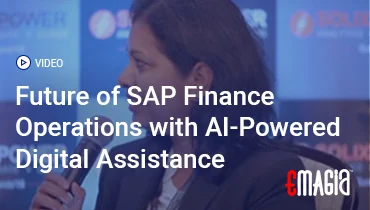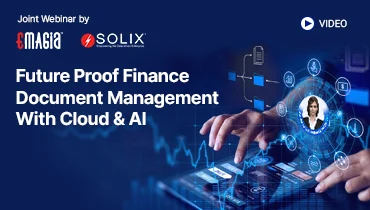The Indispensable Foundation of Financial Health
In the complex world of corporate finance, maintaining accuracy and transparency is not just a best practice—it is an absolute necessity. At the heart of this critical mission lies the process of account reconciliation. This isn’t merely a clerical task of matching numbers; it’s the fundamental safeguard that validates every financial transaction, ensuring the integrity of your books and providing an accurate picture of your business’s health. Without a robust and systematic reconciliation process, businesses are vulnerable to errors, fraud, and a lack of clear financial insight. This article will delve deep into the core strategies and best practices for implementing and optimizing your reconciliation efforts, transforming a tedious chore into a powerful driver of operational excellence.
We’ll explore how to move beyond outdated, manual approaches and embrace modern reconciliation systems and software tools for bank account reconciliation that can revolutionize your finance department. From understanding the core principles to implementing cutting-edge automated reconciliation solutions, this guide provides a comprehensive roadmap for any organization looking to fortify its financial controls and build a more resilient and efficient future.
Section 1: The Core Principles of Account Reconciliation
What Exactly Is Account Reconciliation?
At its simplest, account reconciliation is the process of comparing two sets of records to ensure that the figures in both are in agreement and are accurate. The goal is to identify and investigate any discrepancies, making necessary adjustments to bring the balances into harmony. This process is crucial for verifying the accuracy of a company’s financial records. It’s not just about balancing your bank accounts; it extends to every financial account on your balance sheet, from accounts payable and receivable to fixed assets and intercompany transactions.
Think of it as the ultimate check-and-balance system. The reconciliation process provides a clear audit trail and helps to confirm that all transactions are legitimate and correctly recorded. It is the backbone of sound financial management, providing assurance to both internal stakeholders and external auditors that the financial statements are reliable.
Why Effective Reconciliation is Non-Negotiable
A lax approach to the recon process can have devastating consequences. The risks range from minor reporting errors to significant financial losses due to fraud or undiscovered mistakes. Timely and accurate reconciliation is essential for several key reasons:
- Fraud Detection: It helps in the early detection of suspicious or unauthorized transactions.
- Error Correction: It uncovers and corrects errors such as transposed numbers, duplicate entries, or omitted transactions.
- Informed Decision-Making: An accurate financial picture allows management to make sound, data-driven decisions.
- Compliance and Audits: It ensures readiness for internal and external audits and compliance with regulatory standards.
- Improved Cash Flow Management: Timely bank reconciliation provides a real-time view of cash balances, which is vital for liquidity management.
The importance of this process cannot be overstated. It is a proactive measure that protects a business’s assets and reputation.
Section 2: The Evolving Landscape: Manual vs. Automated Reconciliation
The Legacy of Manual Reconciliation
For decades, the reconciliation process was a manual, spreadsheet-heavy task. Finance professionals would spend countless hours downloading bank statements, exporting data from various systems, and painstakingly matching transactions line by line in tools like Excel. This approach, while familiar, is fraught with limitations. The sheer volume of transactions in modern business makes manual reconciliation incredibly inefficient. It is also highly susceptible to human error, which can lead to significant inaccuracies and delays. The time spent on this repetitive, low-value work detracts from more strategic, analytical tasks.
The Power of Automated Reconciliation
The rise of specialized reconciliation solutions and technologies has completely changed the game. Automated reconciliation software uses intelligent algorithms to automatically match transactions, often achieving a high percentage of matches instantly. This not only dramatically reduces the time and effort required but also significantly increases accuracy. It frees up the finance team to focus on the exceptions—the transactions that don’t automatically match—and on providing deeper, more valuable financial analysis.
This shift from a manual to an automated model is a critical strategic move for any business aiming for operational excellence. It is the core of modern financial management and a prerequisite for a fast and accurate monthly close.
Section 3: Key Strategies for a Successful Implementation
Strategy 1: Adopting the Right Technology
The most impactful step in modernizing your reconciliation systems is the adoption of the right technology. This is about more than just buying a new tool; it’s about choosing a partner that aligns with your business’s specific needs.
Choosing the Best Reconciliation Software
The market offers a wide range of best reconciliation software. When making a selection, consider the following:
- Integration Capabilities: Does the software integrate seamlessly with your existing enterprise resource planning (ERP) system and other financial tools?
- Scalability: Can the software handle your future transaction volume as your business grows?
- Matching Logic: Look for advanced matching capabilities, including one-to-one, one-to-many, and many-to-many matches.
- Reporting and Analytics: The tool should provide clear dashboards and reports that give you real-time visibility into your reconciliation status.
From dedicated bank account reconciliation software to comprehensive general ledger reconciliation software, the right tool can automate everything from daily reconciliation to complex intercompany eliminations. A robust account reconciliation tool with features like AI-powered matching and exception handling is a significant competitive advantage.
Strategy 2: Standardizing and Optimizing the Process
Technology is only part of the solution. An effective strategy requires a well-defined and standardized process.
Establishing a Standardized Recon Process
Define clear, step-by-step procedures for every type of reconciliation, whether it’s credit card reconciliation software, payment reconciliation software, or a simple bank reconciliation program. This standardization ensures consistency and accuracy across the board, reducing the risk of errors and making the process easier for new employees to learn.
Implement a risk-based approach to the balance sheet reconciliation process, prioritizing high-volume or high-risk accounts. This allows your team to focus its efforts where they are most needed, maximizing efficiency and control.
Strategy 3: Focusing on the People
Even with the most advanced automated reconciliation platform, human oversight is indispensable. The role of the finance professional shifts from a data-entry clerk to a strategic analyst.
Training and Change Management
Proper training is crucial for a smooth transition. Your team needs to understand not just how to use the new accounting reconciliation software, but also how the new reconciliation solutions improve their work and the overall financial health of the company. A strong change management plan can help overcome resistance and ensure a high adoption rate.
Section 4: A Step-by-Step Guide to Implementation
Phase 1: Discovery and Planning
Before you can implement new reconciliation systems, you must first understand your current state.
- Assess Your Current Process: Document your existing manual or semi-automated reconciliation finance workflows. Identify pain points, bottlenecks, and the accounts that consume the most time.
- Define Your Requirements: Based on your assessment, create a list of essential features for your new automated account reconciliation solution. Consider your transaction volume, the complexity of your accounts (e.g., intercompany vs. bank), and integration needs.
- Build a Business Case: Quantify the benefits of automation. Calculate the potential time savings, reduction in errors, and enhanced controls to justify the investment in software for reconciliation.
Phase 2: Selection and Procurement
Use your requirements list to evaluate vendors and solutions. Request demos and engage in a dialogue to see how different reconciliation tools would handle your unique challenges. Pay close attention to a vendor’s support structure and implementation methodology. A good partner will guide you through the transition.
Phase 3: Implementation and Rollout
This is where the plan becomes reality.
- Data Migration and Integration: Work with your vendor to connect the new accounting reconciliation software to your existing data sources.
- Configuration and Rule-Setting: Define the matching rules that will automate your process.
- Pilot Program: Start with a single, high-volume account, such as a main operating account, to test the new bank rec software and refine the process before a full rollout.
- Training: Provide hands-on training for all users.
Phase 4: Post-Implementation and Continuous Improvement
Implementation is not the end. The final phase involves monitoring and refining your new system to ensure it delivers maximum value over time.
Section 5: Tackling Specific Reconciliation Challenges
Intercompany Reconciliation
For multi-entity organizations, intercompany reconciliation software is a game-changer. Manual intercompany matching can be a logistical nightmare, especially with different currencies and disparate systems. An automated solution can streamline this, bringing significant efficiency to the consolidated close.
Payment and Credit Card Reconciliation
Payment reconciliation software and credit card reconciliation software are essential for businesses with high transaction volumes from multiple payment gateways. They automate the matching of payments to sales records and bank deposits, ensuring that all revenue is accounted for.
Section 6: The Future of Financial Reconciliation
AI and Machine Learning in Financial Reconciliation
The future is already here, with artificial intelligence (AI) and machine learning (ML) taking automated reconciliation solutions to the next level. These technologies can learn from historical data to improve matching rates, handle complex exceptions, and even predict potential discrepancies before they happen.
An auto reconciliation software powered by AI can automatically propose new matching rules based on patterns it identifies, drastically reducing the manual effort required to maintain the system. This kind of intelligence is transforming the account reconciliation solution from a static tool into a dynamic, learning asset.
Section 7: A Powerful Example in Action
How Emagia Helps Revolutionize Your Reconciliation
As a leader in the world of financial automation, Emagia understands the profound challenges businesses face with manual and outdated reconciliation processes. Emagia’s AI-powered reconciliation platform is designed to transform the accounting reconciliation process from a time-consuming, error-prone activity into a streamlined, strategic function. By providing a comprehensive data reconciliation software, Emagia helps businesses gain unmatched visibility and control.
With Emagia, organizations can leverage automated bank reconciliation software to instantly match millions of transactions, freeing finance teams from repetitive tasks. The platform’s intelligent algorithms automatically handle complex exceptions, such as timing differences and partial payments, which are common headaches in the financial reconciliation process. Emagia’s solution goes beyond simple matching; it provides a complete account reconciliation system with a powerful dashboard for real-time insights and a detailed audit trail for full transparency. Whether you need an effective bank rec software, or a powerful intercompany reconciliation software, Emagia’s scalable and intuitive platform offers a unified reconciliation solution that empowers businesses to achieve faster closes, reduce operational costs, and make smarter financial decisions.
Frequently Asked Questions About Account Reconciliation
What is a financial reconciliation and why is it important?
A financial reconciliation is the process of comparing a company’s internal financial records with external source documents, such as bank statements. It is critical for ensuring accuracy, detecting fraud, and validating the financial health of the business.
What is a balance sheet reconciliation?
A what is a balance sheet reconciliation is the process of reviewing and verifying the accuracy of every general ledger account that appears on a company’s balance sheet. This includes reconciling assets, liabilities, and equity accounts.
How often should a company perform the reconciliation process?
While the standard is to perform accounting reconciliations monthly as part of the financial close, many businesses now use automated reconciliation software to perform daily reconciliation, which provides continuous accuracy and helps catch errors much faster.
How do you reconcile balance sheet accounts?
To how to reconcile balance sheet accounts, you compare the ending balance of a general ledger account to the balance in an external source or a supporting schedule. Any differences are investigated and corrected through journal entries.
What are the benefits of using automated reconciliation solutions?
Automated solutions save significant time, drastically reduce human error, provide real-time visibility, enhance fraud detection, and improve the overall efficiency and accuracy of the reconciliation systems.
What is a recon process?
A recon process is a slang term for the reconciliation process. It refers to the set of steps and procedures a finance team follows to match and verify financial data from different sources.
What is the difference between a bank reconciliation and a balance sheet reconciliation?
A bank reconciliation specifically compares a company’s cash accounts with its bank statements. A balance sheet reconciliation is a broader process that verifies all accounts on the balance sheet, including cash, accounts receivable, accounts payable, and more.
What is account reconcilement?
Account reconcilement is another term for account reconciliation. It is the practice of ensuring that the internal and external records for a financial account are consistent and accurate.


